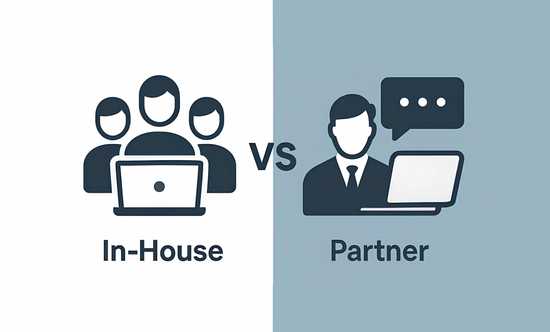Technological Partnership and Outsourcing, and What Would Suit You Best?
Finding a viable product idea is far less challenging than developing, packaging, and marketing it right and at the right time. It is a common misconception that having a great idea is half the deal. In reality, the biggest challenge for both financial and management reasons is finding the right team to bring this idea to life.
In most cases, entrepreneurs, while being experts in their field, naturally have little understanding of software development since this is quite a different sphere. So, even having the most brilliant concept, they do not know yet what the end product will look like, which stack of technologies to use, what specialists they need, and how to filter out the good ones.
On average, a solid complex product requires up to a dozen different specializations. Go figure out how much time, money, and energy it takes to find, attract, and keep not just one but several experienced professionals.
So, often, the only viable option for a business or startup that does not have its own technical team is to get help from another already existing, well-rehearsed one.
The “ready to build” teams’ market can be divided into technological partnership and outsourcing. In this article, we would like to show the pros and cons of each of the two approaches and briefly describe in what situation which one works best.
Outsourcing
An outsourcer is a third-party contractor hired to perform specified services. You set a task, the desired result, and a deadline and, ideally, get exactly what you asked for. Such collaboration implies that the client knows well what they want to be done and how, and controls the contractor’s work progress.
What outsourcing does not imply is that the contractor takes the creative initiative. They are limited in time and staff, with dozens of contracts to work on. And they do not have any vested interest in the success of the client’s project to go out of their way and perfect the solution, so the contract’s outcome largely depends on the client’s attentiveness and the clarity of the requirements. To cut it short, the contractors do what they are told to do.
It necessitates a certain level of technical expertise and resources to manage the outsourced work expected from a software development company but unattainable for a startup with no developer team. But even if the client has, let’s say, a CTO that could overlook the contractor’s work, the need to control implementation often turns into micromanagement.
The results are an unmotivated outsourcing team implementing a sub-optimal solution. And don’t get us started on the wasted but oh-so-expensive time the CTO and the founder would rather spend on pitching investors, generating new ideas, and finding new opportunities.
Still, it is a convenient option to get the job done when it is not critical enough to keep in-house, when the contractor’s team is professional, and the client can adequately manage the work and assess the results.
Another case when outsourcing is a good choice is when you already have a software product in place, and what is required is just either to scale it or elaborate it a bit for the specific client’s needs, like integrating it with some extra sources or adding a reporting piece, etc.
Technological partnership
A technological partner becomes the company’s full-on technical team, which can be a perfect choice for entrepreneurs that lack one. It is a long-term, mutually beneficial commitment where the client provides a business idea, and the vendor implements it into a product.
Obviously, when someone takes most of the burden off your shoulders, this cannot be for free. So, the cons here are evident: one has to pay more compared to outsourcing. Unlimited, unrestricted access to professionalism is more expensive.
Commonly, the technological partner participates in the project in exchange for equity. That is why a technological partnership is sometimes coined as a sweat equity investment – an investment of the vendor’s time, labour, expertise, and experience.
This power dynamic makes all the difference. Instead of performing disparate top-down tasks, the technological partner actively participates in projects they choose and approaches project development holistically. They offer their technological expertise and smooth business processes, have a critical eye, and can suggest more effective approaches when they see the flaws of the current ones and are financially motivated to build a successful product.
Combine all of those, and you get an enthusiastic professional team of specialists you would not have access to that works efficiently and de-risks the startup process. A technological partner is there not just to get it done but to make it work.
Let’s summarize what we have described above:
Outsourcing:
- Cheaper but requires more time and management efforts from the customer.
- A great choice when the main job is done, and one needs just to add some extended functionality or elaborate the system a bit by the existing patterns.
- Will work when there is a CTO on the client side that will manage the implementation, and the required development processes are well-documented.
Technological Partnership:
- A perfect choice when you have a great idea but no technical experts to lead the process
- An option when you are ready to share part of your future revenue or invest more in the development process in return for getting set business processes and technological expertise
- Work with an equal partner rather than a performer.


